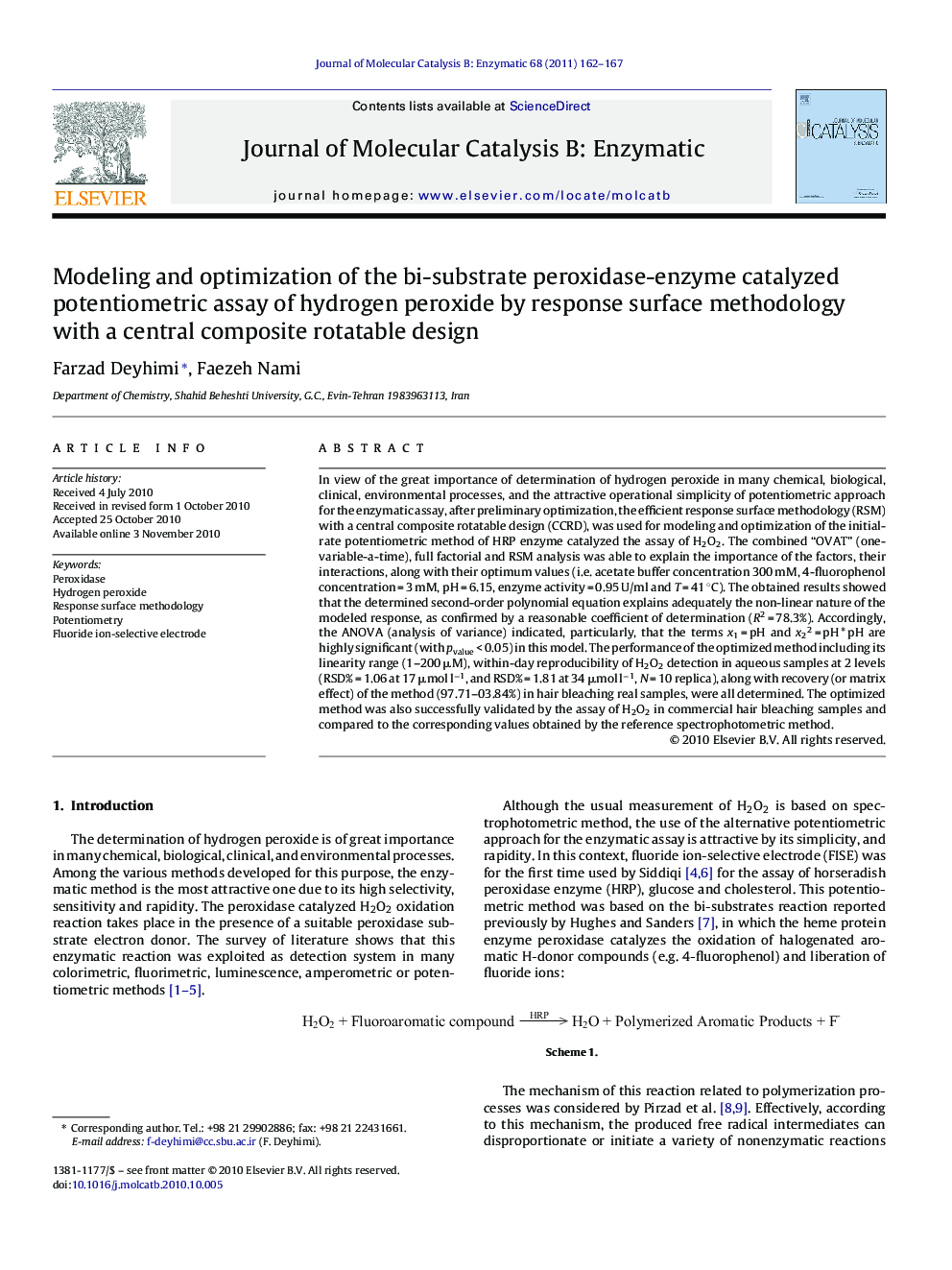| کد مقاله | کد نشریه | سال انتشار | مقاله انگلیسی | نسخه تمام متن |
|---|---|---|---|---|
| 70737 | 48844 | 2011 | 6 صفحه PDF | دانلود رایگان |

In view of the great importance of determination of hydrogen peroxide in many chemical, biological, clinical, environmental processes, and the attractive operational simplicity of potentiometric approach for the enzymatic assay, after preliminary optimization, the efficient response surface methodology (RSM) with a central composite rotatable design (CCRD), was used for modeling and optimization of the initial-rate potentiometric method of HRP enzyme catalyzed the assay of H2O2. The combined “OVAT” (one-variable-a-time), full factorial and RSM analysis was able to explain the importance of the factors, their interactions, along with their optimum values (i.e. acetate buffer concentration 300 mM, 4-fluorophenol concentration = 3 mM, pH = 6.15, enzyme activity = 0.95 U/ml and T = 41 °C). The obtained results showed that the determined second-order polynomial equation explains adequately the non-linear nature of the modeled response, as confirmed by a reasonable coefficient of determination (R2 = 78.3%). Accordingly, the ANOVA (analysis of variance) indicated, particularly, that the terms x1 = pH and x22 = pH * pH are highly significant (with pvalue < 0.05) in this model. The performance of the optimized method including its linearity range (1–200 μM), within-day reproducibility of H2O2 detection in aqueous samples at 2 levels (RSD% = 1.06 at 17 μmol l−1, and RSD% = 1.81 at 34 μmol l−1, N = 10 replica), along with recovery (or matrix effect) of the method (97.71–03.84%) in hair bleaching real samples, were all determined. The optimized method was also successfully validated by the assay of H2O2 in commercial hair bleaching samples and compared to the corresponding values obtained by the reference spectrophotometric method.
Figure optionsDownload as PowerPoint slideResearch highlights▶ The efficient response surface methodology (RSM), with a central composite rotatable design (CCRD), was used for modeling and optimization the initial-rate potentiometric method of HRP enzyme catalyzed the assay of H2O2. ▶ The obtained results showed that the obtained second-order polynomial equation explains adequately the non-linear nature of the modeled response. ▶ This methodology was able to explain the importance of the experimental factors, their interactions, along with their assay optimum values.
Journal: Journal of Molecular Catalysis B: Enzymatic - Volume 68, Issue 2, February 2011, Pages 162–167